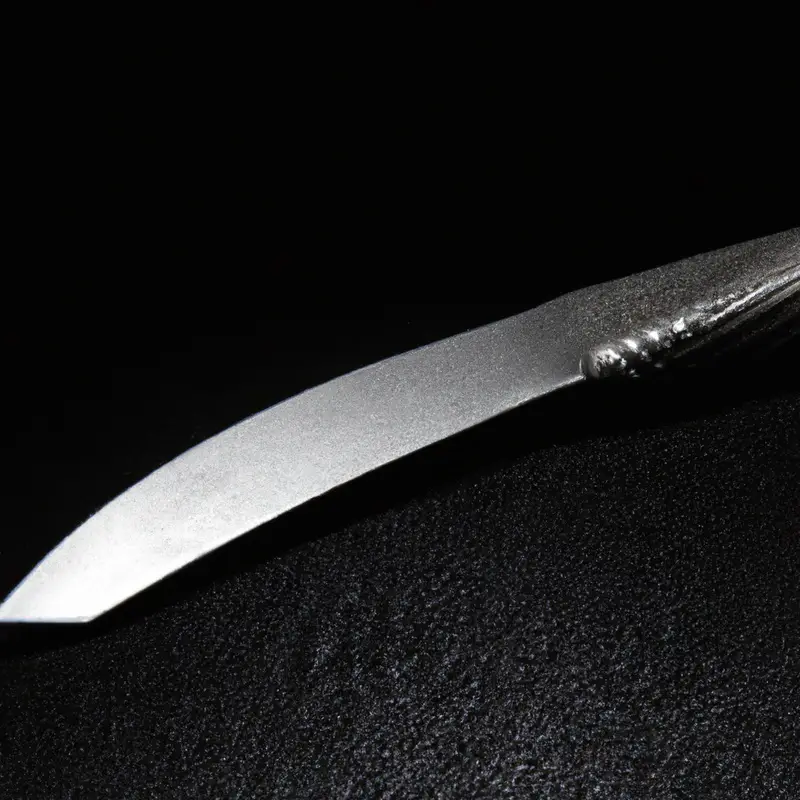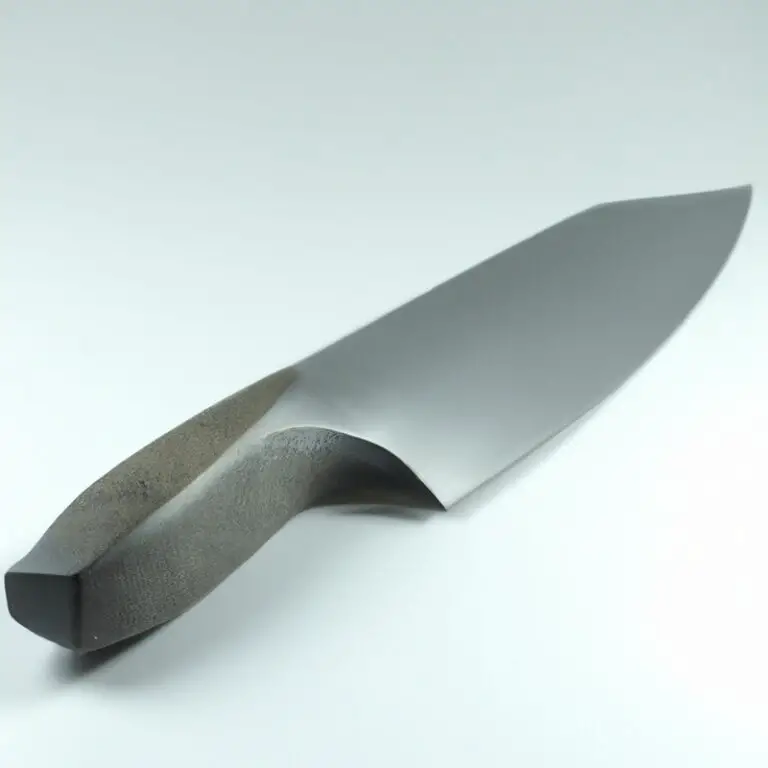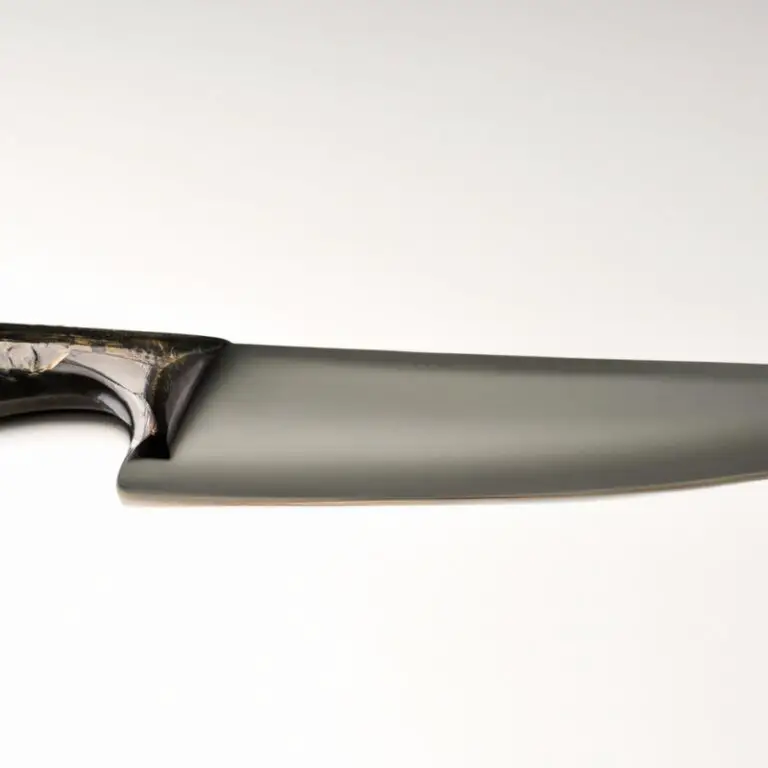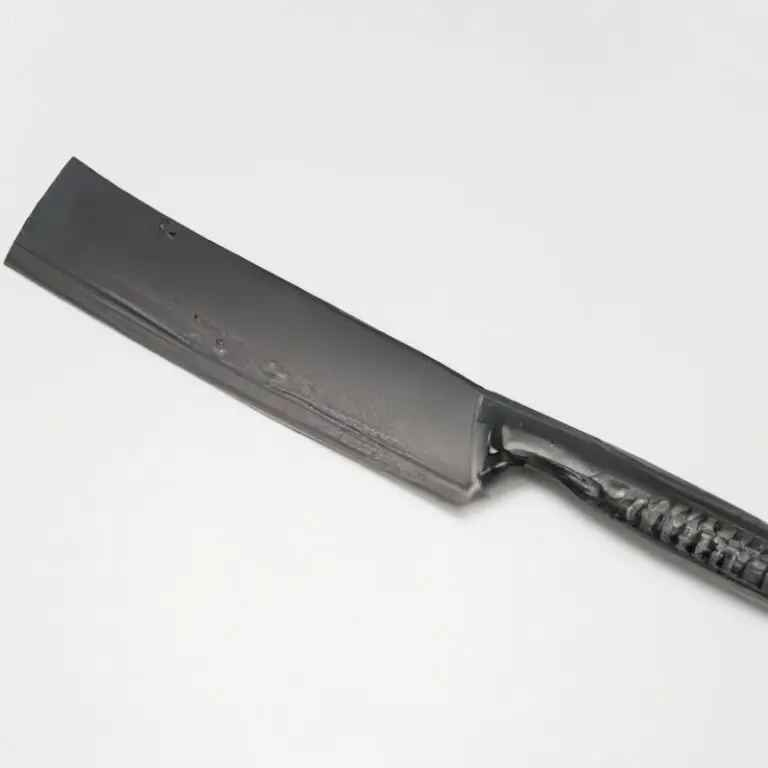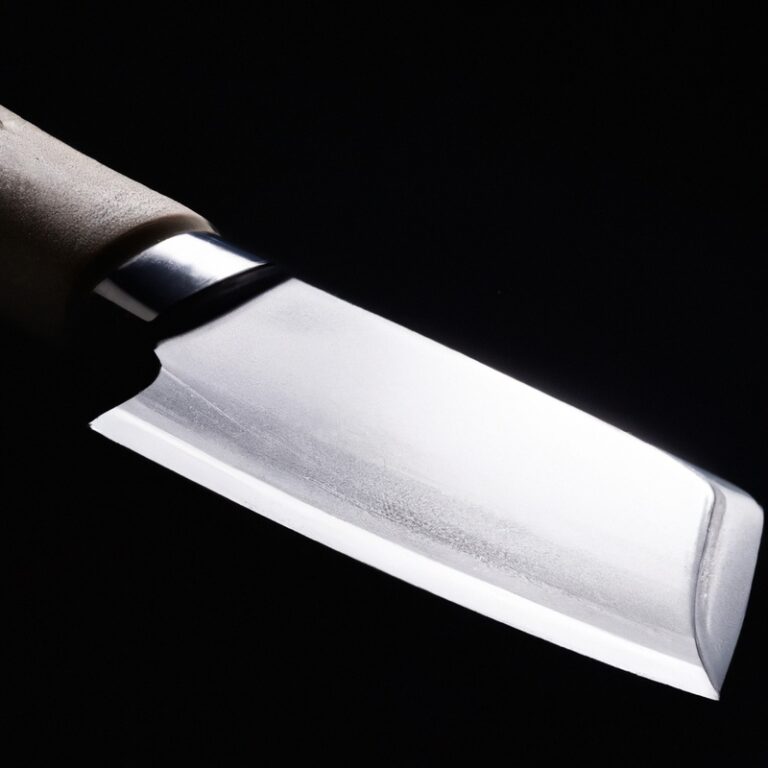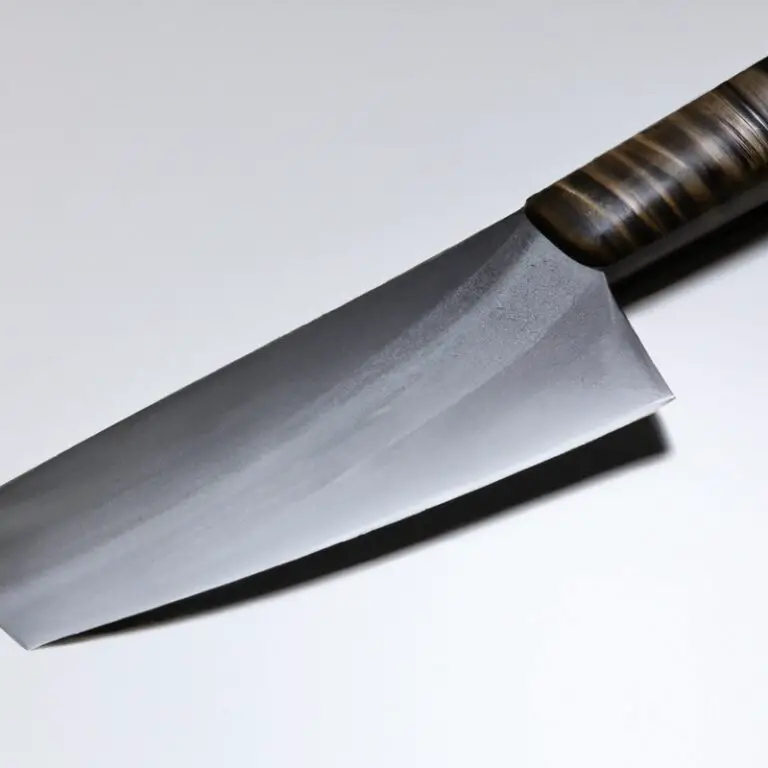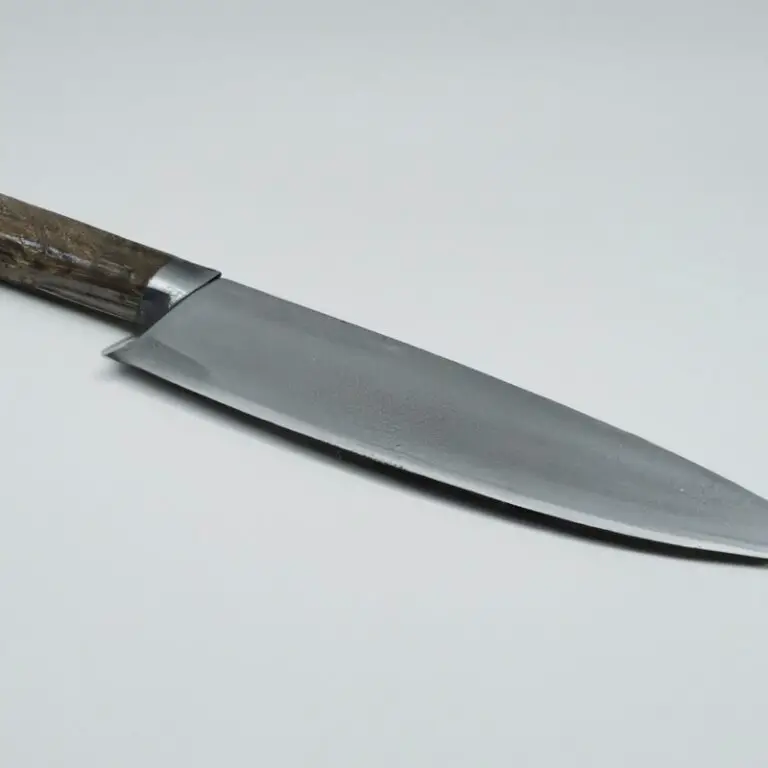How To Achieve Paper-Thin Slices With a Gyuto Knife? Slice Like a Pro!
Key Takeaways:
- “Choose a sharp and high-quality Gyuto knife for precise slicing”
- “Master the proper cutting technique to achieve paper-thin slices”
- “Practice patience and consistency to perfect your slicing skills”
- “Experiment with different foods and cutting angles to enhance your slicing abilities.”
Are you tired of uneven, chunky slices ruining the presentation of your dishes? Look no further than the Gyuto knife.
This Japanese chef’s knife is known for its precision and versatility in the kitchen, but mastering the technique for paper-thin slices can be daunting.
Fear not, as I have compiled key tips and techniques to help you achieve the perfect slice every time. From the anatomy of the knife to the art of hand positioning, this article will cover everything you need to know to become a slicing pro.
| Technique | Description |
| Hold | Hold knife at a 15-20 degree angle to the cutting board |
| Anchor | Secure your produce with your non-dominant hand and tuck your fingertips in to avoid injury |
| Blade | Use a high-quality Gyuto knife with a razor-sharp blade |
| Slice | Make gentle, long, sweeping strokes with the blade, releasing the pressure on each slice to avoid damaging the produce |
| Repeat | Repeat the slicing motion until the desired thickness is achieved |
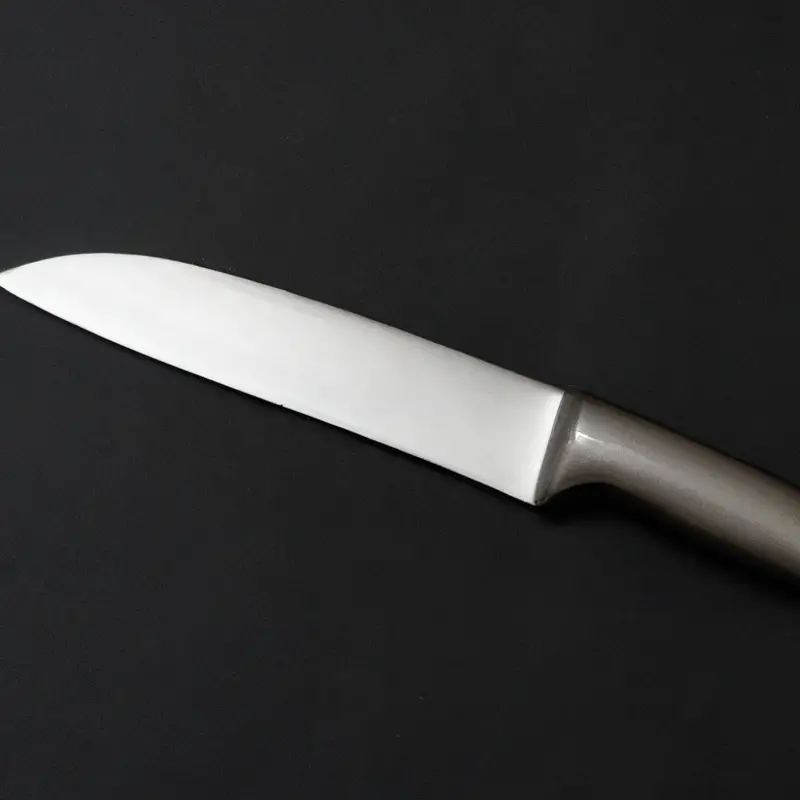
The anatomy of a Gyuto knife: Understanding the different parts of the blade and their functions
A Gyuto knife, also known as a Japanese chef’s knife, consists of three main parts: the blade, the handle, and the tang. The blade is typically made from high-quality steel and features a sharp, beveled edge that tapers to a point.
The spine of the blade is thicker than the edge, providing stability and precision when cutting.
The knife’s handle is attached to the blade and can be made from a variety of materials such as wood, plastic, or stainless steel. The handle should be comfortable to grip and provide a secure grip to prevent slipping while in use.
Lastly, the tang is the portion of the blade that extends into the handle.
A full tang knife has the entire length of the blade running through the handle, providing additional strength and balance. Understanding the different parts of a Gyuto knife is essential in knowing how to use it properly.
The sharp beveled edge of the blade is for slicing through meats, vegetables and fruits.
The thicker spine provides stability for precise cutting and chopping. The handle provides comfort and a secure grip, which is necessary when working with a sharp blade.
Sharpening your Gyuto knife: Key tips and techniques for achieving razor-sharp edges
To achieve paper-thin slices with a Gyuto knife, it is important to have a razor-sharp edge. Here are some key tips and techniques for sharpening your Gyuto knife:
- Use a honing rod before and after each use to maintain the edge.
- Sharpen your knife using a whetstone, making sure to follow the manufacturer’s instructions for angle and pressure.
- Use a leather strop to polish the edge and remove any burrs.
- Regularly test the sharpness of the edge using a piece of paper or tomato skin.
Remember to take your time and be patient when sharpening your Gyuto knife to achieve the best results. With practice and careful maintenance, your knife will be able to slice through even the toughest of ingredients with ease.
Achieving the perfect angle: Finding the optimal angle for paper-thin slicing
Achieving the perfect angle is essential when it comes to slicing ingredients paper-thin with a Gyuto knife. The optimal angle for paper-thin slicing is typically between 7 and 15 degrees.
However, this may vary depending on the thickness and hardness of the ingredient.
To find the right angle, it’s best to start with a shallower angle and gradually increase it until the desired thickness is achieved. Experimentation is key in finding the perfect angle for different ingredients.
Keep in mind that maintaining a consistent angle throughout the slicing process is essential for even and uniform slices.
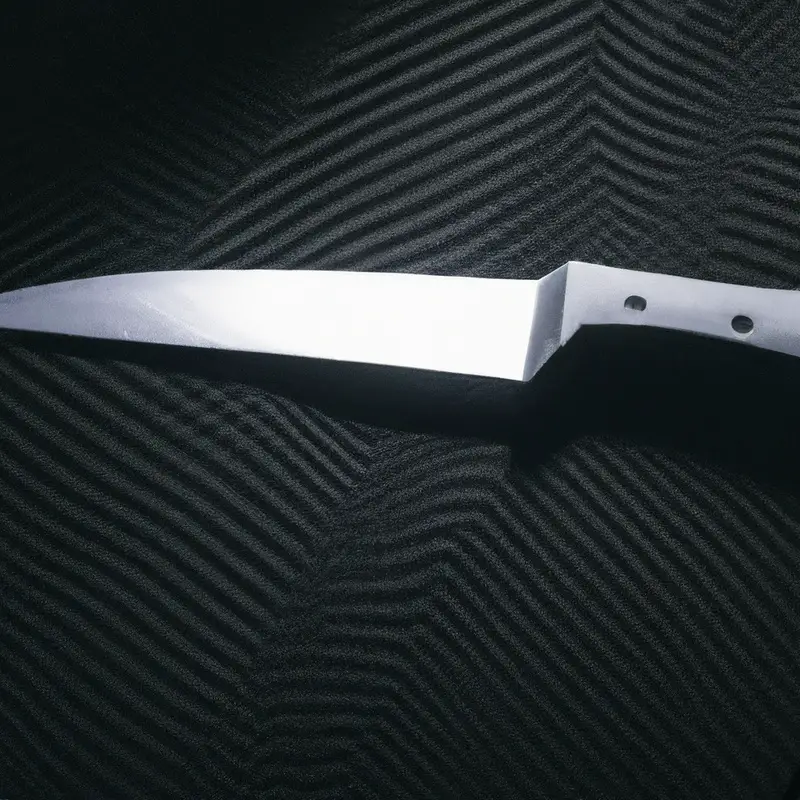
Choosing the right cutting board: Materials and features to look for to ensure precision cutting
Choosing the right cutting board is crucial when it comes to achieving precision cutting with a Gyuto knife. Here are some materials and features to look for:
- Material: Wood is a popular choice as it provides a soft surface that won’t damage the knife’s edge. However, avoid bamboo and other hard materials that can dull the blade.
- Size: Choose a board that is large enough to accommodate the food you’re cutting while allowing ample space for your hands and the knife.
- Thickness: Look for a thick, sturdy board that won’t warp or slide during use.
- Maintenance: Make sure the cutting board is easy to clean and sanitize to prevent cross-contamination and foodborne illnesses.
- Compatibility: Consider the type of knife you’ll be using and ensure the cutting board is suitable for that blade.
By choosing the right cutting board, you can ensure the longevity of your knife and achieve precision cutting results.
Maintaining your Gyuto knife: Proper cleaning and storage to keep your knife in top condition
Proper cleaning and storage are crucial for maintaining the sharpness and longevity of your Gyuto knife. To clean the blade, use a damp cloth to wipe away any food residue, and then dry it immediately with a clean towel.
Avoid using abrasive sponges or harsh chemicals, as they may damage the blade.
When it comes to storage, we recommend using a knife sheath or a knife block to protect the blade from getting nicked or scratched. Avoid storing your knife with other sharp objects, such as other knives or utensils, as this can also cause damage.
Additionally, be sure to regularly hone and sharpen your Gyuto knife to keep it in top condition.
With proper care and maintenance, your Gyuto knife can last for many years and continue to slice with precision and ease.
The art of hand positioning: Techniques for holding the knife and food to achieve consistent slices
To achieve paper-thin slices with a Gyuto knife, mastering the art of hand positioning is crucial. There are several techniques you can use for holding the knife and food to achieve consistent slices.
- The “claw” technique: This involves curling your fingertips under and using your knuckles to guide the knife, while your thumb rests on the back of the blade. This grip ensures safety and helps you control the thickness of each slice.
- The pinch grip: In this technique, you hold the blade between your thumb and index finger, just above the handle. This grip provides maximum control over the knife’s movement and helps you achieve precise cuts.
- The handle grip: This grip involves gripping the handle of the knife firmly and using a rocking motion to slice through the food. It’s ideal when slicing larger or tougher ingredients, such as meats or vegetables.
No matter what grip you choose, keep your wrist straight, and let the knife do the work. Avoid using excessive force and work at a comfortable pace to achieve consistent slices.
With practice, you’ll master the art of hand positioning and become a pro at paper-thin slicing with a Gyuto knife.
Conquering tough ingredients: Strategies for slicing dense or fibrous foods with ease
Slicing dense and fibrous ingredients can be challenging, but with the right strategies and techniques, it can be a breeze. To conquer tough ingredients with your Gyuto knife, you can:
- Use a sawing motion: Instead of pushing down on the blade, use a sawing back-and-forth motion to slice through dense or fibrous foods like squash, root vegetables, and meats.
- Pre-cut the ingredients: If the ingredient is too large or tough to cut through, pre-cut it into smaller sections before slicing to make it more manageable.
- Use a heavier knife: For especially tough foods, consider using a heavier Gyuto knife with a thicker blade to generate more slicing power.
- Spiral cut technique: Another approach is to make a shallow spiral cut on the surface of the fruit and then use your fingers to pull apart each slice for a more natural look.
By using these strategies, you can make it much easier to achieve the paper-thin slices you’re aiming for.
The role of the pinch grip: How to use this technique to enhance control and precision
The pinch grip is a foundational technique that allows for greater control and precision when slicing with a Gyuto knife. To use the pinch grip, place your thumb and index finger on opposite sides of the blade, near the bolster or blade heel.
This grip allows for a secure hold and better management of the knife’s weight and balance.
By keeping your other fingers curled around the handle, you can maintain a stable grip while also allowing for flexibility and dexterity in slicing. To enhance the pinch grip, practice slicing with a slow, deliberate motion, applying even pressure throughout the cutting stroke.
This will help to maintain control and ensure consistent, uniform slices.
As you become more comfortable with the pinch grip, try experimenting with different hand positions and angles to find the optimal grip for each ingredient. Overall, mastering the pinch grip is essential for achieving paper-thin slices with a Gyuto knife.
With practice and patience, this technique can help you unlock the full potential of your knife and take your slicing abilities to the next level.
Honing your skills: Exercises and drills to improve your paper-thin slicing abilities
To improve your paper-thin slicing abilities with a Gyuto knife, you need to hone your skills through exercises and drills. Here are some techniques that can help you:
- Practice your slicing technique by cutting items with different shapes and sizes.
- Use a mandoline to slice vegetables evenly.
- Try slicing a sheet of paper or a balloon to train your ability to control the blade.
- Sharpen your knife regularly to maintain its sharpness.
- Use a honing rod to keep the blade straight.
- Focus on keeping your wrists and hands steady while slicing.
- Utilize the pinch grip, which can enhance your control and precision.
By incorporating these exercises and drills in your daily routine, you can improve your paper-thin slicing abilities and create beautiful and precise cuts with your Gyuto knife.
The Gyuto knife in action: Demonstrating the knife’s versatility and uses beyond slicing
Apart from slicing, the Gyuto knife can be used for various kitchen tasks. Its versatility makes it a great all-purpose knife.
Here are some of its uses beyond slicing:
- Chopping: The Gyuto knife’s broad, curved blade makes it effective for chopping vegetables, fruits, and nuts.
- Mincing: The thin and sharp blade of the Gyuto knife makes it ideal for mincing garlic, ginger, shallots, and herbs.
- Carving: The sharp blade of the Gyuto knife makes it effective for carving poultry, meat, and fish.
- Peeling: The pointed tip of the Gyuto knife makes it effective for peeling and cleaning vegetables and fruits.
- Pitting: The pointed tip of the Gyuto knife can be used to remove pits from peaches, avocados, and other fruits.
The Gyuto knife is a versatile kitchen tool that can handle a range of tasks. With its sharp and thin blade, it can be used for chopping, mincing, carving, peeling, pitting, and much more.
Final Verdict
Achieving paper-thin slices with a Gyuto knife is not just about technique, but also about understanding the anatomy of the blade, sharpening it meticulously, choosing the right cutting board, and maintaining it properly. By mastering hand positioning, the pinch grip, and honing your skills, you can elevate your slicing game and impress your guests with precision cuts every time.
However, always remember to prioritize safety and take your time as you work with a sharp blade.
With practice and patience, you can wield your Gyuto knife with confidence and finesse, and unlock the versatility and potential of this remarkable tool in your kitchen. Happy slicing!

